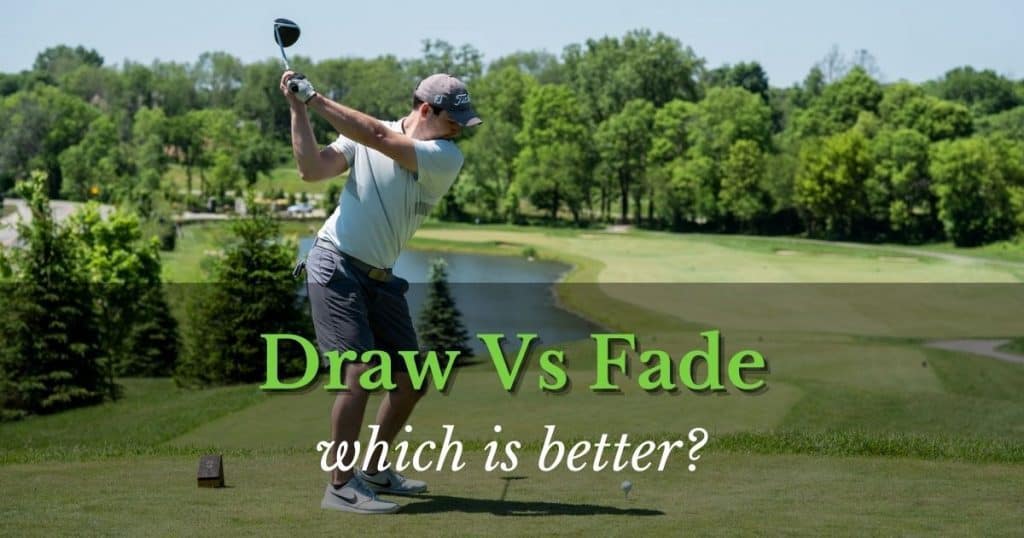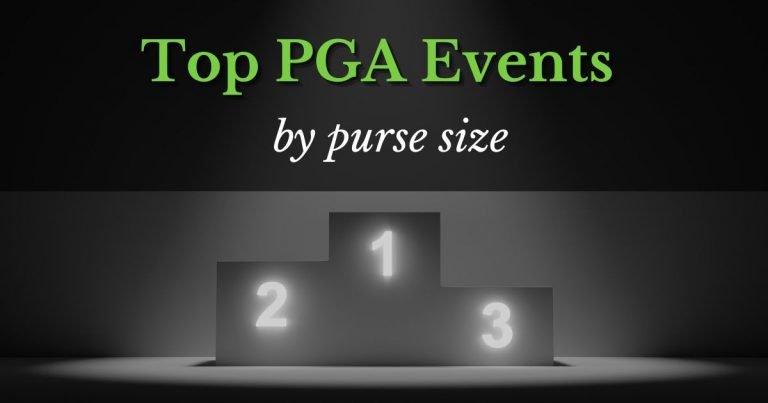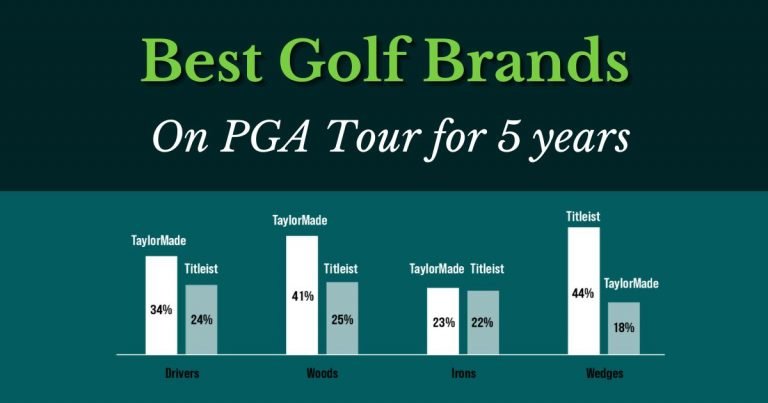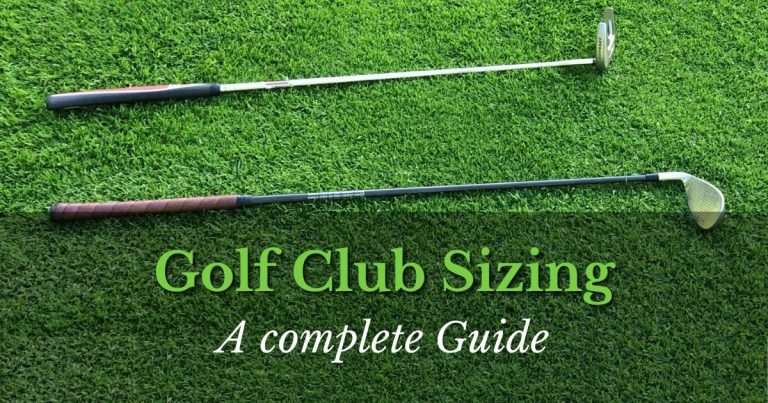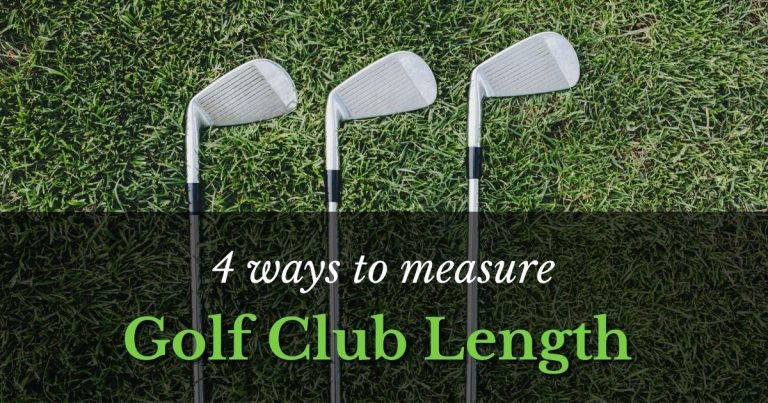What shape is better to play on the golf course? Let’s look at the draw vs fade debate.
It was always a discussion when I was a junior, that better players hit a draw and not so good players hit a fade, but how much of that is true?
My father always shaped the ball both ways at will, so I’ll also discuss what he used to tell me.
Draw Vs Fade
When someone draws a golf ball it moves from right to left and finishes on target. When someone fades or cuts the ball, it moves from left to right and also finishes on target.
So it’s the direction of the curvature that defines the difference in flight. Both flights involve a level of sidespin to allow it to curve in the air.
Some golfers will have a natural shape one way or another and every shot generally does that same flight throughout their round of golf.
Practical benefits of shaping your shots
Looking at a mid-iron shot, the draw shot missing left tends to go farther because the face is closed and less lofted. Considering that, the other way, fade has the opposite where the face tends to be more open and more lofted if the ball misses to the right and can reduce the distance the ball travels through that.
I’ve seen golfers purposely hit draw shapes to get the benefit of the closed face to gain more yards with their irons that way. Unfortunately it stops at the irons and the long irons and woods get harder to get in the air so it has its limits for some. In comparison, the fade has more loft and naturally will spin more which can be beneficial when hitting into a green and wanting to stop the ball quicker.
There is a huge benefit in being able to shape the ball both ways like my father did and that is both when there are obstacles in the way to bend around and when the hole you are playing has a dogleg and you can follow the shape of the fairway with your tee shot.
How to Hit a Fade?
The mechanics of a ball flight, as I understand it, is that the flight starts mostly where the face is aiming at impact. The ball will curve if the swing path is different to that aim.
With a fade, my father always used to get me to aim left with my stance and cut across the ball, or swing to the left. If it didn’t fade there were a few things he’d tell me to do; grip my right thumb more to the left, feel my hands ahead at impact or open the hips up quicker and they were all aimed at reducing the face from closing to make sure it went to the right of my body. Which as mentioned, started left before even swinging.
If I open the face and add loft it may go shorter so if it’s a 7 iron shot normally, I’d maybe use a 6 iron fade to hit a similar distance but get the fade shape.
Pull Fade
If the ball didn’t curve enough and finished left but had the right idea in the air, my father would call this a pull fade as it was pulled left of the target and faded in the air but didn’t curve enough. That came from the swing not being out-to-in enough to create that curve on the ball.
Push Fade
If the curve was correct but it started too far right, that’s a push fade and it can be down to the clubface which can be controlled with your set up before swinging.
Here is a 4 min video packed with some golden tips for amateurs:
Low Bullet fade vs high power fade
The low bullet fade launches lower and spins more, tends to be done with a long iron like Tiger’s 2 iron stingers that served him well for many years hitting down on the ball and sending that thing up the fairway.
A power fade launches higher and spins less, you tee up higher and hit up on the ball with a swing path left of your face aim still and I’ve seen this more with drivers and it battles the extra spin topic I spoke about before, with a more lofted face on an iron to get the fade.
How to Hit a Draw?
Looking back at the mechanics of a fade, the draw needs the opposite factors. The face starts to the right of the target at address and the swing needs to move in-to-out to get the flight to curve back to the left.
What I would do on the practice ground with Dad would be to point the face where I wanted to start the ball and turn my body to the right of that with the grip loose in my hand so the club stays where it is. Now the face is closed to my body but aiming where I want the ball to start.
As I mentioned before about a draw, the clubface is closed and going to go further so practicing it is good to know what to do with clubs.
If it’s a small draw then a normal 7 iron shot may need an 8 iron or a big draw round a tree may need a 9 iron. See why people do it on purpose now? The ego has a 9 iron in hand instead of a 7 iron. Don’t try it on a shot with a tree on the right though.
Here’s a quick video to get you started:
Ball Position Tips For Fade and Draw
Let’s talk about how the ball position can help when looking at Fade Vs Draw.
When you address a golf ball there is a big circle or arc around you, the ball is at the farthest away point. The curve of that circle comes towards you on both sides. On the right is your downswing to the ball and on the left is your follow through after the ball. The downswing moves from your body towards the ball and away from you. The follow through after impact moves towards your body and back to you.
If you have the ball back in your stance and more opposite your right foot, you are more likely to get the club moving away from your body and to the right of the target. This is a path the club needs to do in order to hit a draw. So a ball farther back helps a draw.
On the other hand if you put the ball further forward and more opposite your left foot, this part of the arc is moving back towards you and to the left of the ball which is what we need to encourage a fade. So a ball farther forward helps a fade.
Frequently Asked Questions
Why Does a Draw Go Farther Than a Fade?
Straight answer is, due to the launch angle and spin rates. Although there are nuances to it, just like anything else in Golf!
I looked at 2 different studies on Draw Vs Fade, first using a 6 iron and another using a modern driver designed to reduce spin. Below are the results.
| Metric | Club Speed | Ball Speed | Launch Angle | Back Spin | Total Distance |
| Units | MPH | MPH | (°) | RPM | YDS |
| 6 iron- Draw | 101.9 | 137.2 | 25.4 | 5240 | 203 |
| 6 iron- Fade | 102.3 | 134.9 | 27.5 | 6130 | 197 |
| Driver- Draw | 107.8 | 156.7 | 13.5 | 1931 | 294 |
| Driver- Fade | 109.2 | 158.5 | 11.0 | 3026 | 281 |
In summary, the draw goes further in both studies while club and ball speed were almost the same. (both flights also had the same peak height so would be affected by the wind at the same point)
With 6 iron, the draw travelled more because of a lower launch angle and lower spin. While with the driver, the launch angles did the opposite but the strike of the shot actually affected the spin. Ultimately the draw went farther because of the lower spin rate.
Why Is a Fade Easier Than Draw?
With a draw, some golfers use the hands a lot more to get the face to rotate. With a fade it is more of a passive use of the hands to hold the clubs and stop it closing. For me, the fade can be easier to repeat because of that reduced manipulation of the clubhead.
The draw can have a larger spread and the fade can have a smaller landing area because of this.
Jack Nicklaus said the fade was his “Bread & Butter”.
Why do handicappers want to draw while pros want to fade it?
Handicappers want to draw the ball because the most common fault is too much fade spin and the most common pursuit is more distance. A draw has curing factors for both of these problems.
The pros may want to fade the ball because they have enough speed and distance already, they want something more repeatable. They will also have more pins that are harder to get to or have bunkers in the way and harder faster greens that are better to come in to with more spin and control.
Does the loft matter while trying to draw or fade the ball?
Previously I highlighted the change in iron selection when shaping the ball, based on the changed loft. So yes, loft plays a part while using irons.
When looking at woods you may find that you hit down on the ball more with a fade and up on the ball more with a draw.
Take notes from the power fade (described previously) and try hitting up on the ball while fading to help the increased spin rate come back down and keep that loft at impact higher.
Bend it like you do!
Some tour players will have something called a stock shot. Their natural shape they go to with nothing in the way, it is practiced and more familiar.
But this is not the case with most average players. I recall a funny line someone said,
I can fade, draw, and hit straight, no problem. But not when I want those. ????
If you hit all the shapes badly, start by embedding one natural shape before trying to hit all the shapes available as this will help consistency.
Sometimes it’s good to work on the opposite flight to your bad shot as it can iron out technique flaws and soften bigger problems if you have them. For example a slicer working on a draw swing may hit less of a slice after working on it but not necessarily be hitting a draw yet.

